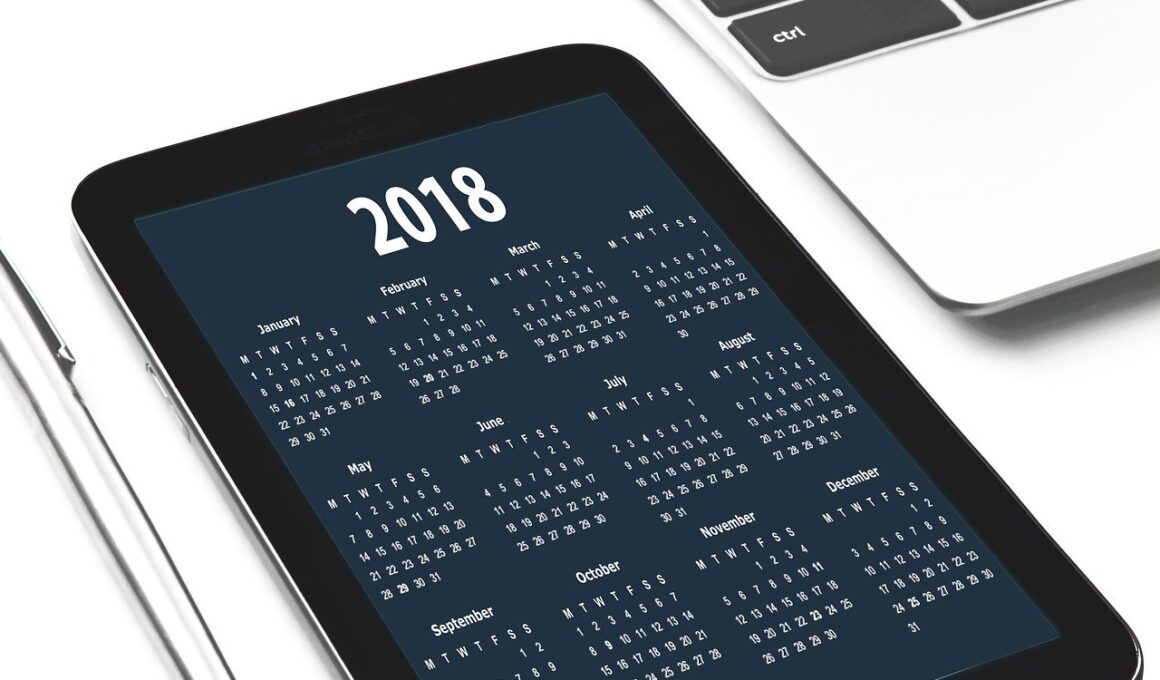Strategies for Efficient Social Media Content Scheduling and Team Training
Social media content scheduling is an essential strategy for maximizing engagement and outreach. Efficient scheduling allows teams to streamline their delivery, ensuring that content aligns with audience availability. First, establish a central calendar that everyone can access. This calendar should detail publication dates, times, and content types, helping all members stay on track. Second, leverage digital tools like Buffer or Hootsuite. These platforms allow for easy management of posts across multiple channels from one interface. Furthermore, incorporate regular training sessions focusing on tools and best practices. This will ensure that all team members are fully equipped to create compelling content that resonates with your target demographic. Encourage team collaboration; use brainstorming sessions to generate innovative ideas. Consistency is key, and by engaging in teamwork, you foster a sense of collective ownership over the content. Lastly, evaluate performance through metrics to identify what works best. Regular reviews drive strategic adjustments, helping teams optimize campaigns and attain higher engagement rates on social media. By implementing these strategies, your content team can effectively manage scheduling, ensuring timely and relevant posts that captivate users.
Training for content teams is equally crucial to successful scheduling outcomes. A well-trained team results in better quality of content and enhances productivity. Start the training process with an assessment of current skills. This allows you to tailor sessions toward specific development needs, promoting continuous growth. Workshops can cover various topics such as market trends, platform algorithms, and audience engagement strategies. Encourage participation in external webinars and conferences for fresh insights into best practices. Pair newer team members with seasoned professionals for mentorship. This integration allows for knowledge sharing and promotes a collaborative culture within the team. Evaluating team performance through constructive feedback is vital. Foster an environment where team members feel safe to share ideas and critique one another respectfully. Project management tools can enhance efficiency—consider using Asana or Trello to assign tasks and track progress. These platforms make it easier to visualize workload and deadlines. Mapping out a clear onboarding process for new members reduces ramp-up time, allowing them to contribute effectively. Overall, a robust training program, coupled with organized scheduling and task management, leads to increased success in social media strategies.
Utilizing Tools for Scheduling Efficiency
Implementing the right tools for social media content scheduling can dramatically increase efficiency for your team. Select scheduling platforms that offer analytics, customization, and ease of use. Tools such as Sprout Social provide insights into audience behaviors, allowing content teams to post at optimal times. Familiarize team members with these tools through hands-on training sessions, focusing on best practices for engagement. Regular check-ins to discuss usage challenges help identify common obstacles and prevent workflow disruptions. Integrating content calendars with visual project management software enhances transparency and accountability. Assign roles and set deadlines clearly within the platform, allowing everyone to see their responsibilities. Encourage cross-platform scheduling, whereby posts are crafted to suit multiple channels without redundancy. This not only saves time, but also ensures a cohesive brand message across different platforms. Moreover, using content templates can streamline your production process. Reusable formats save time and maintain brand consistency. Monitor posting frequency and adjust as needed to prevent burnout and avoid content fatigue. Overall, the right selection of tools paired with strategic training ensures content teams operate at their highest efficiency, maximizing their social media presence.
Effective scheduling also involves a deep understanding of audience engagement patterns. Analyzing posting data reveals when your audience is most active. This information is crucial for scheduling posts that garner the highest engagement rates. Conducting regular surveys can further fine-tune your understanding of audience preferences. Gather insights about the types of content they value most, be it videos, images, or articles. Build a posting schedule based on this feedback, rotating different content types to maintain interest. Utilize A/B testing for your posts to see which formats resonate more with your audience. This analytics-driven approach not only boosts engagement but informs future content development. During training sessions, emphasize leveraging these insights, teaching team members to adapt their postings based on analytics. Provide examples of successful posts and dissect why they worked. Such discussions foster a learning environment where the team can innovate. Celebrate successes within the team, sharing metrics that highlight effective strategies. Measuring the success of posts reinforces accountability and encourages continuous striving for improvement. The combined efforts in understanding the audience and regularly adjusting the strategy create a responsive and effective content scheduling process.
Cross-Training for Diverse Skill Sets
Cross-training within your content team promotes a multifaceted approach to social media management. Each team member should be encouraged to learn various roles beyond their expertise. This not only enhances collaboration during high-demand periods but also fosters a more versatile skill set. For instance, a copywriter should take an interest in graphics creation, while a designer may learn the basics of content writing. This blending of skills increases agility, allowing team members to support each other seamlessly whenever necessary. Implement monthly workshops focusing on different skill domains, featuring internal experts or external trainers. Emphasize creativity during these workshops, prompting exploration of unconventional tool usage, such as Canva for graphic design. Encouraging team members to share knowledge in informal brown-bag sessions can create cohesion and innovation. Allocating time for personal skill development, whether through online courses or industry certifications, also benefits the team as a whole. Building an atmosphere where continuous learning is valued enriches the team’s competency. Ultimately, diverse skill sets lead to a more adaptable and efficient team that can react quickly to challenges, resulting in greater effectiveness in content scheduling.
Social media content scheduling should also align with overarching marketing goals. Coordination between marketing and content teams ensures that social media strategies effectively support broader objectives. Create a shared vision across departments, outlining key performance indicators (KPIs) that relate to audience engagement and conversion rates. Coordinating schedules for content launches with marketing campaigns increases impact. For example, if a product launch is scheduled, social media posts should build excitement beforehand. During training sessions, emphasize the importance of aligning content strategies with overarching goals. This shared understanding of objectives empowers team members to craft content that serves both immediate and long-term missions. Organize regular meetings between departments to foster communication and collaboration. Discuss ongoing campaigns and cross-promotional opportunities, allowing information to flow freely. Transparency in goals aids in fine-tuning social media scheduling, ensuring that teams are on the same page. Periodic reviews of joint efforts help assess performance accurately, providing insight into what types of collaborations yield the best results. As a result, a unified approach promotes efficient scheduling while propelling marketing objectives forward simultaneously.
Conclusion: The Importance of Flexibility and Adaptation
Finally, embrace flexibility as a crucial element in social media content scheduling and team training. The digital landscape is constantly evolving, and teams need to adapt quickly to changes in algorithms or audience preferences. Encourage a culture of experimentation where team members feel free to test new ideas and protocols. As trends shift, review analytics often to determine what adjustments are necessary to stay relevant. Successful teams regularly revisit their content strategies and schedules to account for new insights. Anticipate major changes, such as platform updates or emerging social media formats, by keeping abreast of industry news. Allocate time for training on newly identified tools or concepts that enhance scheduling efficiency. This proactive approach allows the team to adapt rather than react. Additionally, fostering open communication ensures everyone is part of the process, promoting collective adaptation. When individuals feel involved and informed, they are more likely to contribute effectively. Remember, the heart of efficient social media scheduling lies not only in planning but also in the agility to adapt. Ultimately, a confident and well-trained team can successfully navigate the challenges presented by an ever-changing social media landscape.


